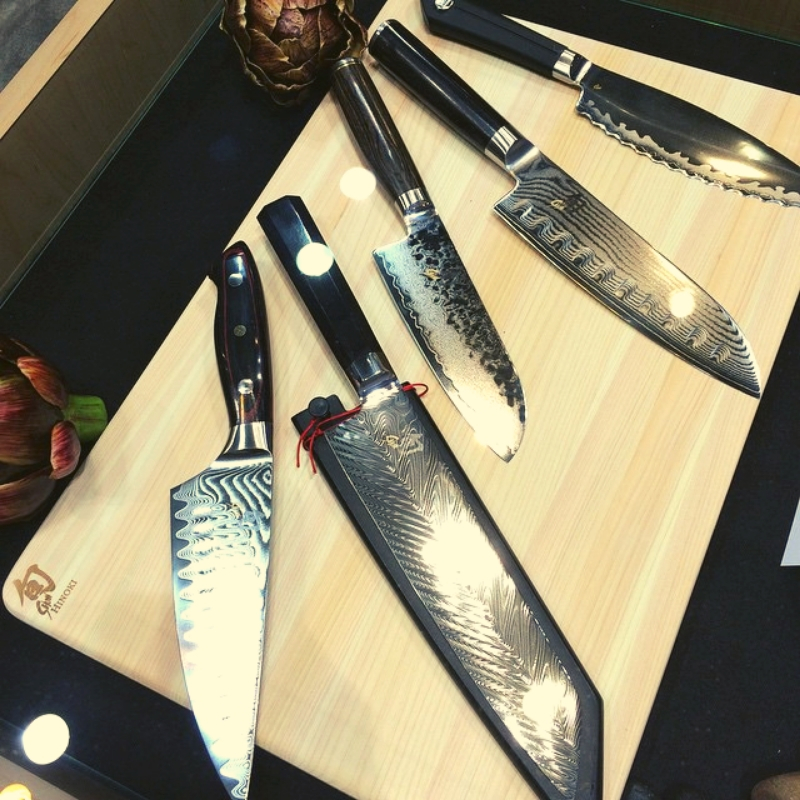
Shun knives have long been a favourite of professional chefs and passionate home cooks. But what is it that truly makes Shun exceptional, with the wide variety of knife brands available?
The Legacy of Ancient Sword Smiths
Shun’s impeccable blades are the result of over 100 years of bladesmithing techniques, dating back to the age of Samurais. The legendary samurai swords were said to be so sharp that a slight graze would cause an incision. These swords were also said to contain the soul of the wielder, making them prized possessions and an extension of the wielder’s body.
Notice the similarity between a samurai’s sword and a Japanese chef’s knife? Shun retains Japanese sword maker tradition where the variation of patterns on the Damascus blades are the signature of the knife maker.
Advanced and High-Performance Body of Steel
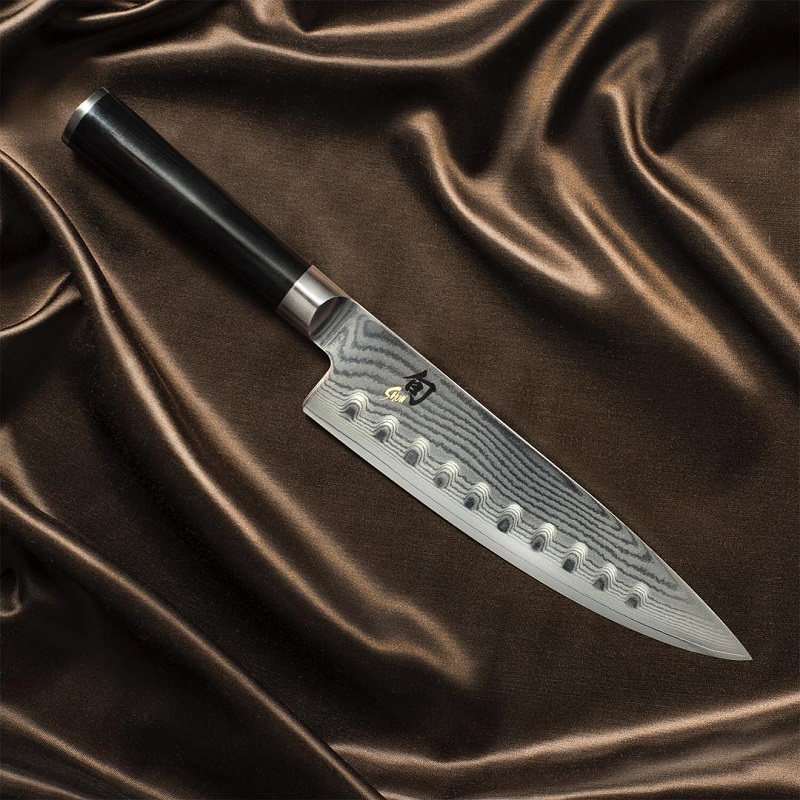
Like most knives,
Shun knives are made from steel. Basic steel is a blend of iron and carbon, amongst other ingredients. What sets Shun apart are the four advanced and high-performance steels used to forge their variety of knives.
Take a quick glance through
Everten’s range of Shun knives and you will notice several different types and range of knives (e.g.
Shun Sora,
Shun Classic). Reading the technical information about these knives will highlight materials like VG10 stainless steel, VG-MAX stainless steel, SG2 stainless steel, or high-carbon “Blue” steel.
While these letters and numbers are important to professional chefs and knife enthusiasts, it may seem far too technical for regular home cooks — don't worry, we've summarised them for you to easily learn about their differences below!
VG10 Stainless Steel
Known as a “super steel” and the best quality Japanese stainless steel for kitchen knives. VG10 high-performance stainless steel combines the strength and rigidity of carbon steel to maintain a sharp blade and the rust-resistant properties of stainless steel. Shun kitchen knives are long lasting with wicked-edge thanks to the excellence of this steel.
VG-MAX
Shun goes above and beyond to surpass the greatness of the VG10 stainless steel by developing the VG-MAX stainless steel. Proprietary to Shun, this steel includes additional carbon for added durability and strength. A Shun knife made from VG-Max stainless steel bears an extremely fine and sharp edge with increased resistance to rust.
SG2 Stainless Steel
The SG2 stainless steel is very similar to the VG10 stainless steel. They’re both very hard and durable steel. What sets them apart is the degree of hardness, with SG2 having a slightly higher level of hardness and durability.
High-Carbon “Blue” Steel
Hold it! Before you start the frantic hunt for blue-coloured steel, you must know that high-carbon “blue” steel is simply the grade of the steel. Not the colour, unfortunately.
Professional chefs generally swear by this grade of steel. The high grade of this steel brings with it an impressively sharp edge, while also allowing it to be re-sharpened easily. With limited time in the kitchen, the last thing they’d want is to re-sharpen it halfway through kitchen preparations!
Age-Honed Forging Styles
Knife collectors may be wondering “if Shun’s blade is hard, won’t it be easily susceptible to breakage?”. Thankfully that’s not the case. To overcome that, Shun uses two traditional styles that were passed down from Samurai sword-making techniques; Kasumi and San Mai.
Kasumi
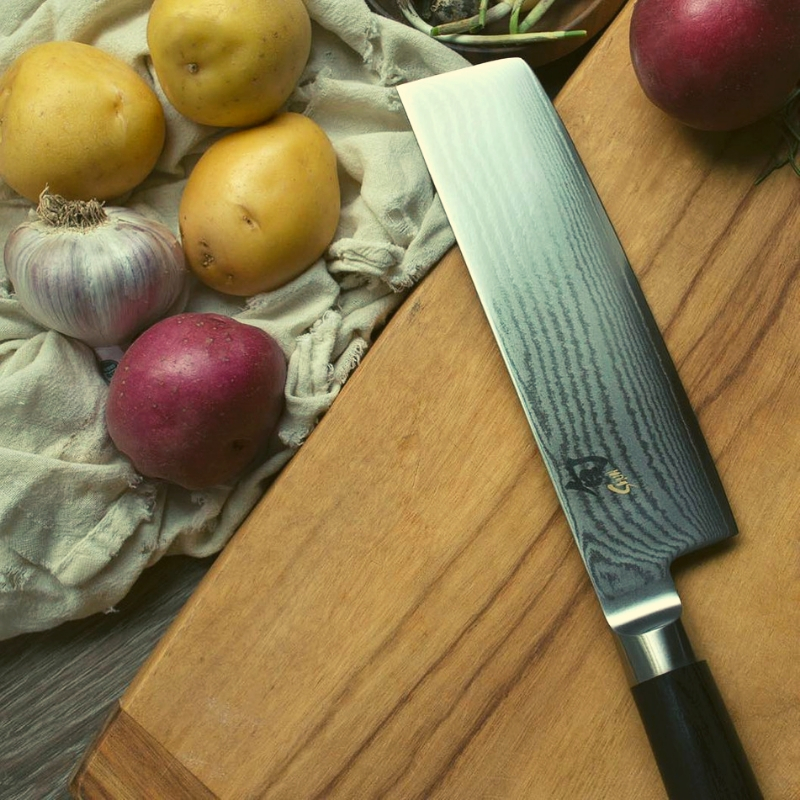
Meaning “mist” in Japanese thanks to its beautiful misty appearance, this technique involves cladding a hard steel core with “softer” steel to support it. Think of a tennis racquet’s handle – the inner body is metal while the external wrap is usually a softer material.
This knifemaking method protects the core from breaking apart while providing an extremely sharp edge. Shun’s beautiful Damascus aesthetics are the result of Kasumi construction.
San Mai
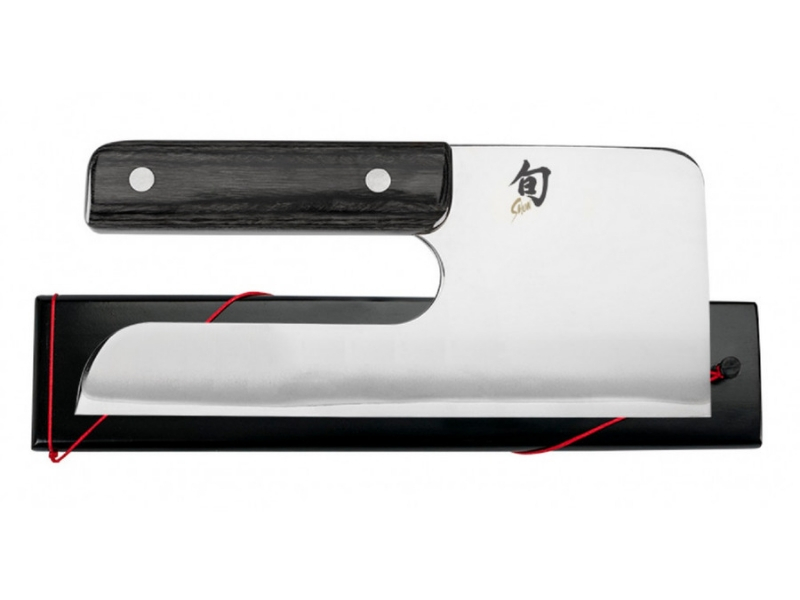
San Mai roughly means “three flat things” in Japanese. This method is used to make
Shun’s Blue Steel collection. So how is this technique performed?
Shun’s craftsmen use extreme heat and pressure to sandwich hard carbon steel between two layers of stainless steel. As a result, an ultra-sharp and stain resistant
Shun Blue Steel blade is forged. These knives need a little more care to protect against rust, but its construction makes it heaps easier!
Beautiful Damascus Layers
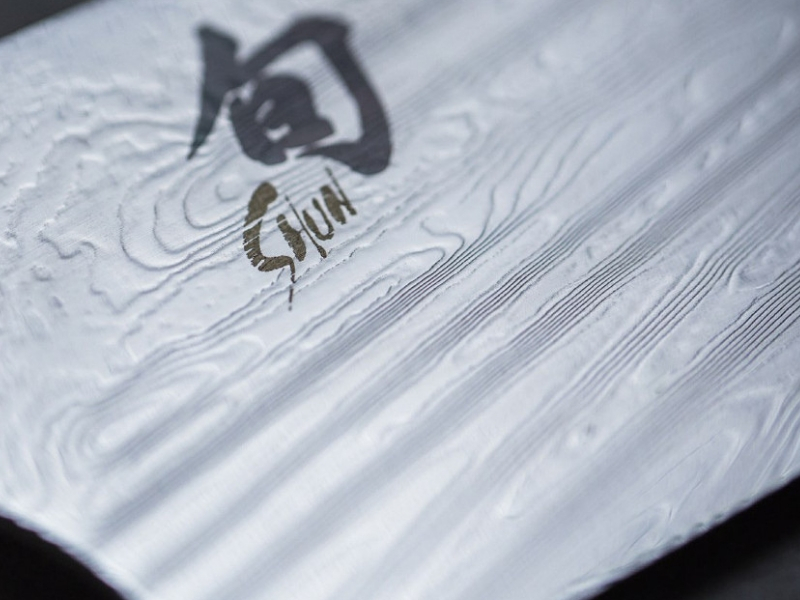
The highly recognisable ripple design found on Shun knives is layered Damascus. Damascus is formed by layering several types of metal alloys together and forging them into a single body. This creates the ripples found on the blade.
Up to 32 layers of metal on each side can be found on Shun knives. These carefully forged layers allow Shun knives to enjoy the protective properties and stain resistance of Damascus.
Composite Blade Technology
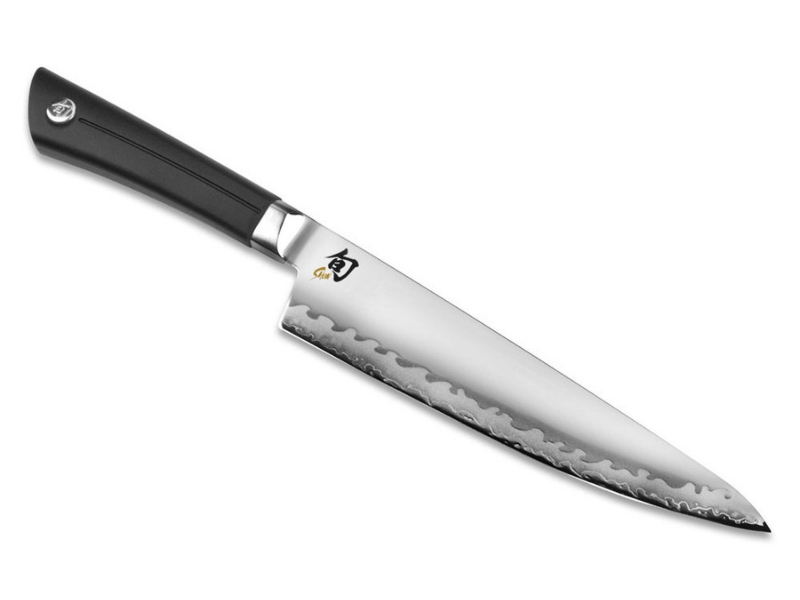
A quick look at Shun knives and you will instantly notice a light ripple or a lighter coloured design at the edge. This is formed through Shun’s patented Composite Blade Technology, implemented in 2013 for the
Shun Sora range.
This technology works very much like combining pieces of a jigsaw puzzle. Two different types of steel are laser cut then permanently joint into a single blade. The joining process, known as brazing, uses a braze alloy to connect the steels.
With this technology, you can enjoy the premium advantages and true beauty of Shun knives without the premium price tag.
Ergonomic Handle
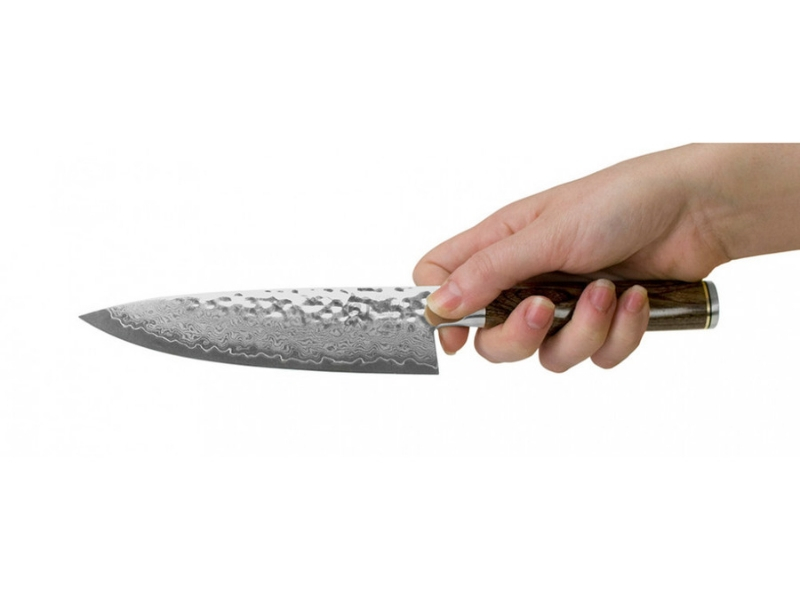
Knife handles are often overlooked in favour of the blade. What most users don’t realise is that the quality of the handle determines if the knife is comfortable to be held. Can you imagine chopping with a poorly built knife handle for a long duration? Your chopping quality will surely be badly affected.
Shun’s knife handles are cleverly constructed from genuine hardwood that has been injected with resin. By merging these two components, Shun users enjoy a comfortable, moisture resistant, strong, and durable knife handle. Thanks to the resin within the hardwood, Shun knives are not porous and unstable unlike most wooden constructs but retains the beauty of wooden handles.
Hand-hammered Tsuchime Finish
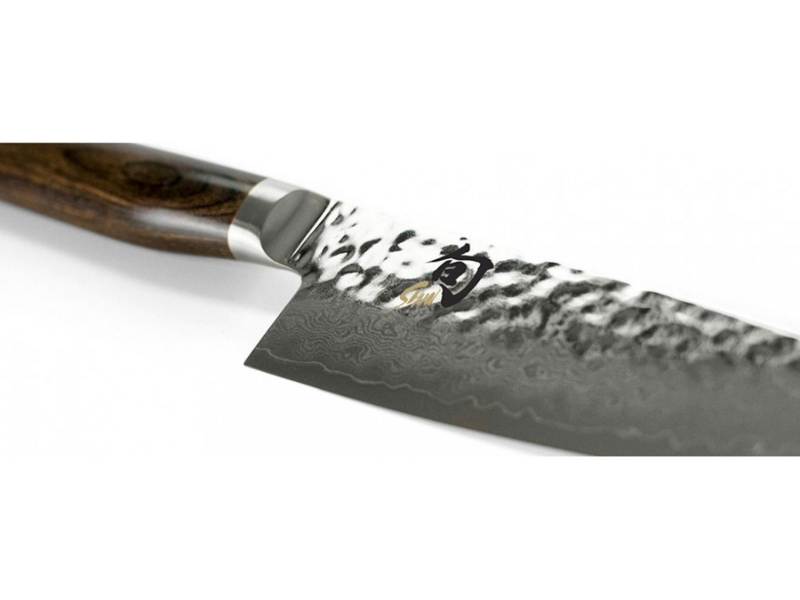
Tsuchime simply means “hammered” in Japanese. You will notice that Shun’s stunning Premier range has a significantly different finish compared to the other collections. This is because of the tsuchime finish done on the knife.
The process of tsuchime involves vigorous hand-hammering by Shun’s craftsmen to create tiny air pockets, making hollow-ground cavities. These cavities prevent food from sticking to the blade, allowing the user to produce perfectly smooth cuts of food.
Sharp and Durable Cutting Edge
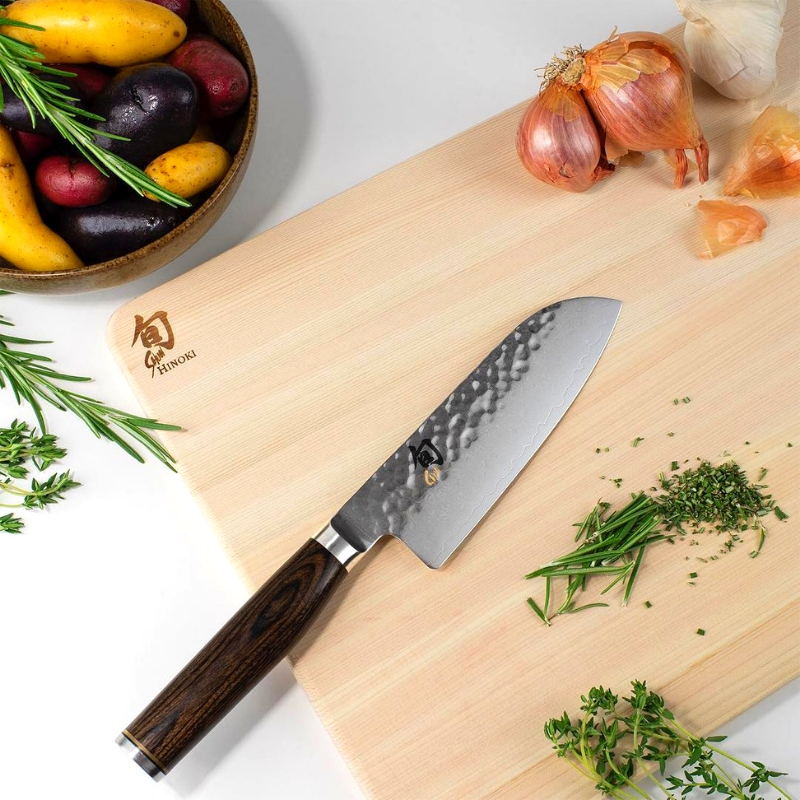
Japanese knives are famed for their incredibly sharp cutting edge. Shun is no different. What sets Shun apart from other Japanese knives in the market is their 16° angle cutting edge on each side. Here’s a simple comparison between normal knives and Shun knives. A normal knife may take approximately 3 strokes to fillet a salmon, but a Shun knife does it in one swift stroke.
Shun's hard premium steel body allows it to be made thin, light, and sharp with a lasting lifespan. Re-sharpening will no longer be a frequent chore thanks to the excellent craftsmanship and material used to forge Shun knives.
Whew! After going through all that, it isn't difficult to see why Shun knives are superior Japanese knives. Its quality is impeccable and has also proven to be a great value for money thanks to its complex and carefully planned construct.
Planning to add a knife from Shun to your kitchenware collection? We recommend
Shun’s Sora range for those who’d like to get a feel of Shun knives for the first time. For the veterans,
Shun’s Premier range will be the sharpest addition to your arsenal of kitchen knives.